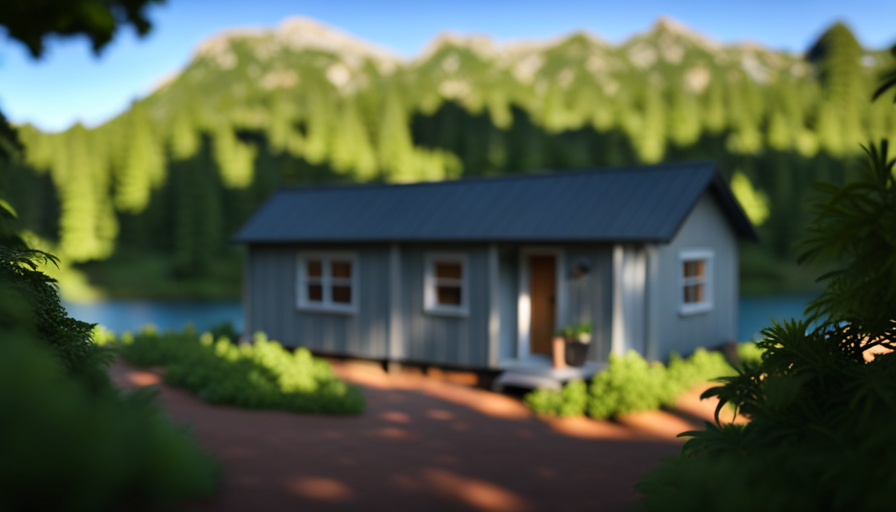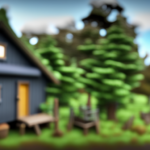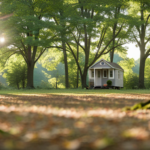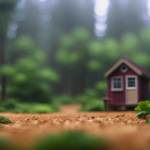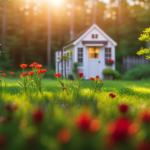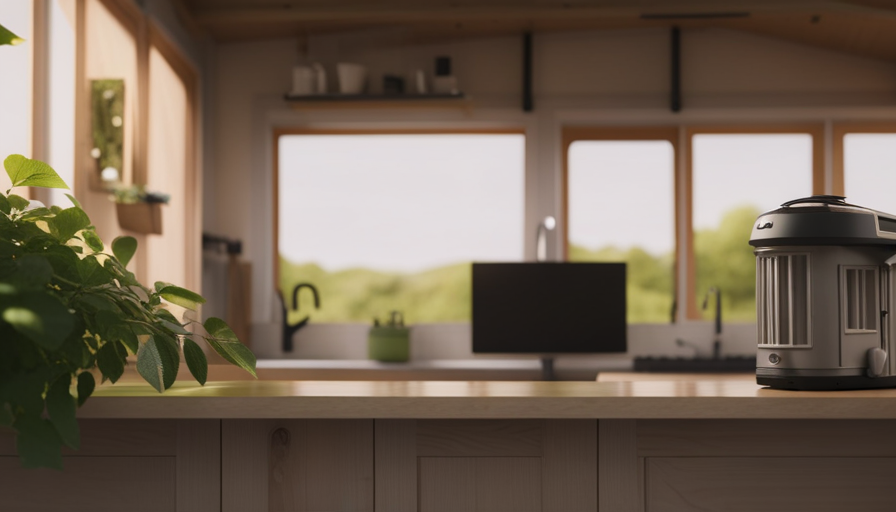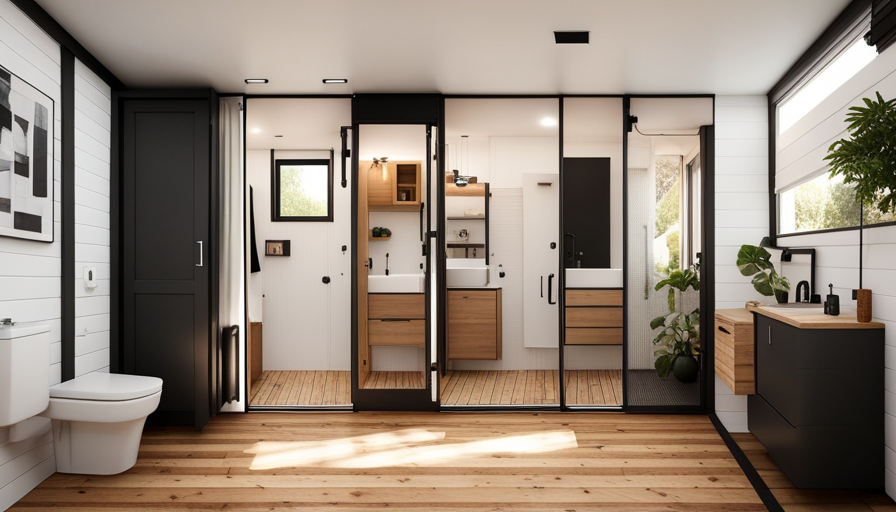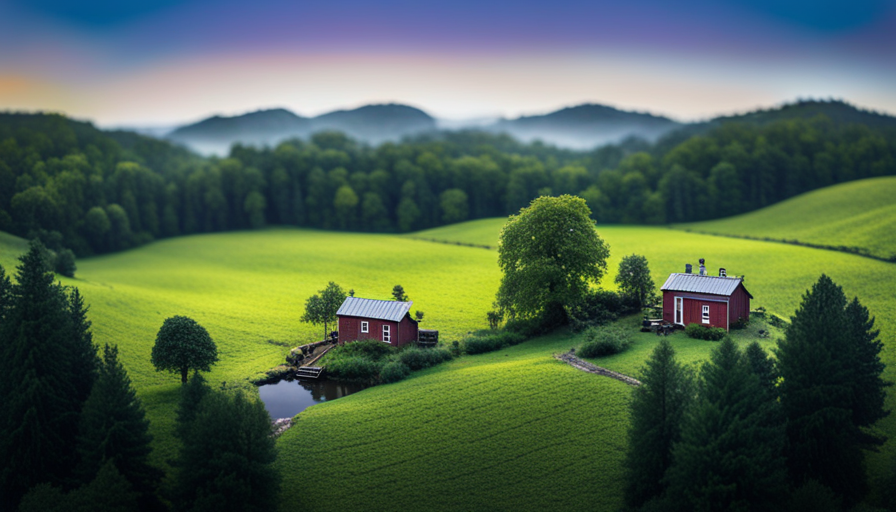Congratulations on deciding to adopt a minimalist lifestyle by joining the tiny house movement! The significant question now arises: where can you reside in a tiny house? It’s somewhat ironic that finding a place to establish your home can be such a daunting task, considering the small size of a tiny house. However, worry not, as I’m here to navigate you through the numerous options available.
From urban areas to rural communities, backyard living to tiny house villages, there are plenty of options available for those seeking to downsize their living space. You could even consider campgrounds and RV parks or custom-built tiny house communities. Each option comes with its own set of pros and cons, so it’s important to weigh your priorities and preferences.
In this article, I’ll dive into the various places where you can live in a tiny house, sharing insights and tips to help you make an informed decision. So grab a cup of coffee, sit back, and let’s explore the exciting world of tiny house living together.
Key Takeaways
- Options for living in a tiny house include urban areas, rural communities, backyard living, and tiny house villages.
- Urban areas offer affordability and flexible zoning regulations for tiny house living.
- Rural communities provide tranquility, a connection to nature, and require careful consideration of zoning regulations.
- Backyard living requires checking local zoning regulations and addressing privacy and noise concerns.
Urban Areas
If you’re looking for a bustling and vibrant city life, there’s no shortage of urban areas where you can live in a cozy and charming tiny house.
Many cities across the country are embracing the tiny house movement and providing opportunities for affordable housing in these urban environments. One of the main advantages of living in a tiny house in an urban area is the affordability. With rising housing costs in cities, tiny houses offer a more cost-effective option for those looking to live in desirable locations.
Additionally, zoning regulations in many urban areas are becoming more flexible to accommodate the tiny house trend. Some cities have created specific zoning codes for tiny houses, allowing them to be placed in backyards or on smaller plots of land. This opens up opportunities for individuals to live in the heart of the city, close to amenities and job opportunities, without breaking the bank.
Transitioning to the subsequent section about rural communities, it’s worth noting that living in a tiny house in an urban area may not be for everyone. While it offers affordability and convenience, some people may prefer the peace and tranquility of rural living. So, if you’re seeking a slower pace of life and a closer connection to nature, exploring tiny house options in rural communities might be the perfect fit for you.
Rural Communities
In rural communities, finding a cozy abode is like stumbling upon a hidden gem. The tranquility and simplicity of living in a tiny house in a rural area is unmatched. Not only can you escape the hustle and bustle of urban life, but you can also enjoy the beauty of nature right at your doorstep. However, before you embark on your rural tiny house adventure, it’s important to consider the zoning regulations in the area. Some rural communities may have specific rules and restrictions regarding tiny houses, so it’s crucial to do your research beforehand.
To help you navigate the world of rural tiny house living, here is a table outlining some key factors to consider:
| Factors to Consider | Pros | Cons |
|---|---|---|
| Tiny house zoning | Allows for legal placement of tiny houses | Restrictions may limit location choices |
| Off-grid living | Self-sufficiency and reduced reliance on public utilities | Requires additional planning and preparation |
Whether you choose to live off the grid or connect to utilities, rural communities offer a unique opportunity to embrace a simpler way of life. So, if you’re ready to trade the noise of the city for the serenity of the countryside, let’s explore the next section about backyard living.
Backyard Living
Nestled amidst a lush green oasis, your backyard becomes an idyllic haven for embracing a simpler way of life. Living in a tiny house in your backyard offers a unique opportunity to downsize, reduce expenses, and live more sustainably.
Here are some important considerations when it comes to backyard living:
-
Zoning regulations: Before setting up your tiny house in the backyard, it’s crucial to check your local zoning regulations. Some areas have specific restrictions on the size and type of structures allowed in residential lots. Familiarize yourself with these rules to ensure compliance and avoid any legal issues.
-
Privacy concerns: Living in close proximity to your neighbors can raise privacy concerns. Consider implementing features like tall fences, strategically placed landscaping, or outdoor curtains to create a secluded and intimate space. Additionally, open communication with your neighbors can help address any potential concerns and maintain good relationships.
-
Noise management: Living in a tiny house in your backyard means being mindful of noise levels. Take steps to minimize noise, such as using soundproofing materials or choosing quieter appliances. Respectful consideration of your neighbors’ peace and quiet is essential.
-
Outdoor living: One of the advantages of backyard living is the opportunity to create an inviting outdoor living space. Designate an area for relaxation, gardening, or even hosting gatherings. Utilize natural elements like trees and plants to create a serene atmosphere.
Transitioning to the next section about ‘tiny house villages,’ it’s important to explore other living options beyond backyard living.
Tiny House Villages
When it comes to finding a place to live in a tiny house, joining existing tiny house villages and communities can be a great option. These communities offer a supportive network of like-minded individuals who share a passion for tiny house living.
Additionally, exploring co-living spaces designed specifically for tiny house enthusiasts can provide a unique and fulfilling living experience.
Lastly, connecting with organizations and groups that support tiny house living can provide valuable resources and opportunities to learn from experienced individuals in the tiny house community.
Join Existing Tiny House Villages and Communities
You’ll discover a close-knit community of like-minded individuals embracing the tiny house lifestyle by joining existing tiny house villages and communities. Here are four reasons why joining intentional communities and off-grid living opportunities can be a great option for tiny house enthusiasts:
-
Shared Resources: In these communities, you can pool your resources and share common facilities like gardens, workshops, and recreational spaces, making your tiny house living experience even more fulfilling.
-
Supportive Network: Being part of a tiny house community provides a strong support system where you can connect with others who understand the challenges and joys of living in a small space, fostering a sense of belonging and camaraderie.
-
Sustainable Living: Many of these communities prioritize sustainable practices such as rainwater harvesting, composting, and renewable energy sources, allowing you to live in harmony with nature and reduce your ecological footprint.
-
Learning Opportunities: Joining a tiny house village offers a chance to learn from experienced individuals who have already overcome the obstacles of tiny house living, providing valuable insights and knowledge.
By exploring co-living spaces for tiny house enthusiasts, you can further expand your network and find new ways to connect with like-minded individuals.
Explore Co-Living Spaces for Tiny House Enthusiasts
If joining an existing tiny house village or community doesn’t align with your lifestyle, another option to consider is exploring co-living spaces specifically designed for tiny house enthusiasts. These spaces provide a unique opportunity to live among like-minded individuals who share a passion for sustainable living and minimalist lifestyles.
One of the advantages of co-living spaces is that they often have established tiny house regulations in place, ensuring that you can legally park and live in your tiny home. Additionally, these spaces may offer various sustainable living options such as communal gardens, shared resources, and eco-friendly amenities.
By choosing a co-living space, you can not only find a place to park your tiny house but also become part of a supportive community. Transitioning into the next section, connecting with organizations and groups supporting tiny house living can further enhance your experience on this exciting journey.
Connect with Organizations and Groups Supporting Tiny House Living
Looking to fully immerse yourself in the world of sustainable living and minimalist lifestyles? Connect with organizations and groups that support the tiny house movement to find inspiration, guidance, and a community of like-minded individuals who share your passion for a simpler, more environmentally conscious way of life.
Here are four ways these organizations and groups can help you on your journey:
-
Tiny house financing options: Learn about different financing options available for tiny house projects, including loans, grants, and crowdfunding platforms.
-
Finding legal parking and zoning regulations for tiny houses: Get information on where you can legally park your tiny house and navigate zoning regulations to ensure compliance with local laws.
-
Networking opportunities: Connect with other tiny house enthusiasts through workshops, conferences, and online communities to exchange ideas, tips, and resources.
-
Educational resources: Access a wealth of knowledge through workshops, webinars, and educational materials provided by these organizations to help you build, design, and live in your tiny house successfully.
By connecting with these organizations and groups, you can gain the support and knowledge needed to thrive in the world of tiny house living.
Now, let’s transition to exploring campgrounds and RV parks for tiny house enthusiasts.
Campgrounds and RV Parks
Discover the hidden gems of campgrounds and RV parks, where you can immerse yourself in nature and experience the freedom of living in a tiny house. These unique settings offer a multitude of benefits for tiny house enthusiasts, including breathtaking views, access to recreational activities, and a sense of community.
Many campgrounds are conveniently located near national parks, allowing you to explore the beauty of nature right at your doorstep. Imagine waking up to the sound of birds chirping and being just a short walk away from hiking trails and wildlife.
In addition to their proximity to natural wonders, campgrounds and RV parks can also be found in beachfront locations. Picture yourself enjoying your morning coffee while watching the waves crash on the shore, or taking a leisurely stroll along the sandy beaches. Living in a tiny house in such a picturesque setting provides the perfect combination of relaxation and adventure.
Transitioning into the subsequent section about custom-built tiny house communities, these campgrounds and RV parks offer a great starting point for those looking to live in a tiny house. However, for those seeking a more permanent and tailored tiny house experience, custom-built tiny house communities provide an ideal solution.
Custom-Built Tiny House Communities
Nestled in scenic locations, these custom-built communities offer a unique and personalized living experience for those seeking a cozy and eco-friendly abode. Living in a tiny house community provides a sense of belonging and a chance to connect with like-minded individuals who share a passion for minimalist living.
Here are three reasons why custom-built tiny house communities are an ideal option for those looking to downsize:
-
Tiny House Regulations: One of the biggest challenges when it comes to living in a tiny house is finding a place where it’s legal to park or build one. Custom-built tiny house communities have already tackled this issue by ensuring that their properties comply with local tiny house regulations. This means you can rest assured that you won’t have to face any legal hurdles.
-
Zoning Laws: Zoning laws can often restrict where you can park or build a tiny house. However, custom-built tiny house communities have already done the legwork by choosing locations that are zoned for tiny houses. This eliminates the stress of navigating complicated zoning laws and allows you to focus on enjoying your new community.
-
Supportive Community: Living in a custom-built tiny house community means being surrounded by individuals who understand and appreciate the tiny house lifestyle. You’ll have the opportunity to connect with like-minded neighbors, share resources, and learn from each other’s experiences. This supportive community adds tremendous value to the overall living experience.
Custom-built tiny house communities offer a solution to the challenges of tiny house living by providing legal and supportive environments. By choosing to live in these communities, you can enjoy the freedom and simplicity of tiny house living without the stress of navigating tiny house regulations and zoning laws.
Frequently Asked Questions
Are there any restrictions or regulations on living in a tiny house in urban areas?
Yes, there are restrictions and regulations on living in a tiny house in urban areas. These include tiny house building codes and zoning laws specifically designed to address the unique challenges of tiny house living.
Can I legally live in a tiny house in a rural community?
Living in a tiny house in a rural community is possible, as long as you adhere to tiny house zoning and building codes. These regulations ensure safety and harmony within the community while allowing you to embrace the simplicity and charm of tiny house living.
What are the legal requirements for living in a tiny house in someone’s backyard?
To legally live in a tiny house in someone’s backyard, you must comply with zoning laws and building codes. These regulations vary depending on your location, so it’s important to research and understand the specific requirements in your area.
How can I find tiny house villages that allow long-term residency?
To find tiny house villages that allow long-term residency, I would recommend researching online directories and forums dedicated to tiny house living. These resources provide information on various communities and their specific rules and regulations.
Are there any campgrounds or RV parks that specifically cater to tiny house living?
There are numerous tiny house communities, campgrounds, and RV parks that cater specifically to the needs of tiny house living. Some even have their own zoning regulations in place to ensure a supportive environment.
Conclusion
So there you have it, folks! Living in a tiny house may seem like a far-fetched dream, but it’s actually quite feasible with the right knowledge and resources.
From urban areas to rural communities, backyard living to tiny house villages, campgrounds to custom-built communities, the options are endless. It’s amazing how much freedom and simplicity can be found in these little havens.
So why wait? Take the leap and embark on your tiny house adventure today – it’s time to live big in a small space! Trust me, you won’t regret it.
Hi, I’m Emma. I’m the Editor in Chief of Tiny House 43, a blog all about tiny houses. While tree houses are often associated with childhood, they can be the perfect adult retreat. They offer a cozy space to relax and unwind, surrounded by nature. And since they’re typically built on stilts or raised platforms, they offer stunning views that traditional homes simply can’t match. If you’re looking for a unique and romantic getaway, a tree house tiny house might just be the perfect option.
